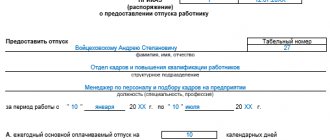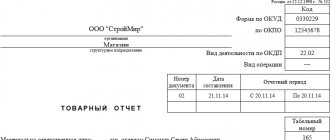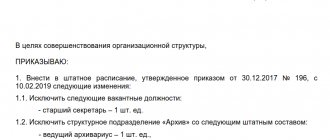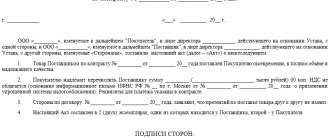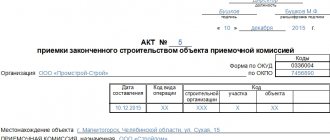in 1C: Accounting 3.0
Many users of “1C: Accounting 3.0” need to print using forms MX-1, MX-3 in the 1C program. Form MX-1 is required if an organization accepts inventory items for safekeeping.
We offer you print processing MX-1 and MX-3 for the “1C: Accounting 3.0”
Implemented for 1C:Fresh . You can find the MX-1, MX-3 stamp in the 1C:Fresh
. Read more…
Printing acts according to form MX-1 in 1C: Accounting 3.0
In 1C: Accounting, printing MX-1 may be required, in particular, in two cases:
- Inventory materials are accepted for safekeeping by your organization, on behalf of which you draw up documents in the 1C program
- The goods and materials remain for safekeeping with the supplier company that supplies you with the goods.
Therefore, printing of MX-1 acts in 1C is implemented for the document “Receipt of goods and services”.
Firstly, this is the most common situation of transfer for safekeeping. If you do not buy a product, but rather accept it for safekeeping, you can specially draw up the document “Receipt of goods and services” in 1C and print out the MX-1 act.
Secondly, the document “Receipt of goods and services” in 1C contains all the basic information necessary for automatically filling out the MX-1 act.
Necessary information for printing MX-1, MX-3 in “1C”:
- Organization accepting for safekeeping
- The counterparty who deposits for safekeeping
- List of inventory items indicating quantity and cost
Results
The unified form MX-3 is used when returning goods from safekeeping to the seller. The taxpayer has the right to use a form developed independently. Draw up the document in 2 copies, one for each of the parties to the transaction.
Sources:
- Law “On Accounting” dated December 6, 2011 N 402-FZ
- Resolution of the State Statistics Committee of Russia dated 08/09/1999 No. 66
You can find more complete information on the topic in ConsultantPlus. Free trial access to the system for 2 days.
Connecting the printing of acts MX-1, MX-3 in 1C: Accounting 3.0
The program for printing acts MX-1, MX-3 connects to 1C: Accounting 3.0 through the “Additional reports and processing” mechanism. Consequently, configuration modification is not required and you will not have any problems updating your 1C: Accounting configuration.
To connect processing, go to Administration - Printed forms, reports and processing - Additional reports and processing
.
Click Create
, the Security Warning window opens, then click Continue
Next, click Load from file and select the processing file and click Write and close
What documents can replace the transfer and acceptance certificate
Everyone should understand that this act cannot fully replace a drawn up agreement, for example, a purchase agreement. The act only serves as its annex, which officially confirms the full or partial execution of the contract.
However, instead of the act, it is allowed to use some other documents. At the same time, they must also reflect the fact of transfer of property and contain other information that should be contained in the act. For example, such information may be present in the delivery note. Data about the parties and the product are also entered here, and other necessary information is indicated.
Thus, when a transfer of property occurs, an invoice may be used instead of a deed. But there are situations when such a replacement is not allowed. For example, if a transaction is being drawn up for the transfer of expensive devices or industrial equipment, when it is necessary to note the claims or lack thereof.
Demonstration of printing acts MX-1, MX-3 in 1C: Accounting 3.0
You can see for yourself how the printing forms MX-1, MX-3 work
in "1C: Accounting 3.0".
To do this, go to our demo database at https://5.101.63.154:8090/AccDemo
Further in the program you can go to the sections “Purchases” - “Receipts, acts”
or
Sales - Sales of goods and services
Select existing documents or create your own documents with your own nomenclature.
In the documents, select the printed form. And depending on the document, a printed form is generated.
Why do you need an act of transfer for safekeeping?
Before putting the property into storage, a corresponding agreement is concluded between the parties.
In essence, the act is documentary evidence that all the terms of this agreement have been met. That is why this document is drawn up directly upon transfer of property. Typically, all necessary information is entered into the document by the receiving party. Although it is worth noting that there is no fundamental difference here. Therefore, any of the participants can fill out the document, because the parties will re-read it before signing autographs. After both parties sign the document, responsibility for safety falls on the receiving party. If injuries and damage are caused, the company that currently stored the property is obligated to compensate. Naturally, the act confirming the fact of the transfer will become the main document in legal proceedings. Here it is clear that the receiving party voluntarily assumes obligations and is ready to bear financial responsibility. Accordingly, the court will oblige this company to pay for the damage caused.
When the storage period ends, material assets are returned in full. This fact must also be documented. Here a corresponding act is drawn up, in which the owner of the property confirms that he received it completely intact.
How to draw up an act correctly
In order to correctly draw up an act that will have legal force, you must adhere to certain rules:
- Today, most of the unified forms have been cancelled. But this often causes confusion. Not everyone knows how to correctly draw up such a document. If this is done in free form, gross errors are often made, due to which the document is declared invalid. That is why it is customary to draw up an act in the MX-1 form, which used to be mandatory. This form greatly simplifies the preparation of the document, since the structure is already indicated here. All that remains is to enter the necessary information in the appropriate fields.
- Depending on the circumstances, it may be necessary to provide some additional information. Since this form is not mandatory, you can exclude or additionally add the necessary items, changing the structure and content of the act.
- If, after all, a free style was chosen, you must fill out the document as carefully as possible. Here you can use a sheet of A4 or A5 paper. The company can also develop a special form for this, which is approved by internal rules.
- Typically, information is entered on a computer. After the document is printed, “live” autographs are affixed to it. You can also fill out the form by hand. But in this case, care must be taken to ensure that the handwriting is legible. You can enter information using printed characters.
- The document is drawn up in two copies, one for each party. This is done so that both organizations have documentary evidence of the transaction. The act may be needed if the parties have any claims against each other, and the matter comes to trial. If necessary, the number of copies can be increased. At the same time, they must be certified by the appropriate signatures.
- Only after the act is completed, each organization enters information about it into the accounting journal.
( Video : “Receipt of goods for safekeeping”)
General information about the document
The act on the return of inventory items transferred for storage is in the Album of unified primary forms for accounting for inventory items at storage locations, which was approved in 1999 (August 9) Post. State Statistics Committee No. 66.
Since the beginning of 2013, unified forms have become only recommended for use, so the company has the right to develop a form that is convenient for it (only by adding rows or columns to MX-3), without forgetting to enter all the necessary document details. The use of the developed form is prescribed in the company's accounting policy. The MX-3 form is complete and convenient, so organizations often use it unchanged.
The purpose of the act is to document the transfer of goods and materials; in addition, on the basis of it, goods and materials are written off from an off-balance sheet account, and the cost of goods storage services is calculated.
For your information! Based on this document, any goods and materials can be transferred: transport, equipment, other goods.
What is important to remember
When filling out the document, you need to remember the following rules:
- The form must be filled out by the financially responsible person of the custodian organization.
- The document must be prepared in two copies. The first will be held by the custodian company, and the second by the bailor.
- The document storage period is 5 years.
- Errors must be corrected in the standard way: by carefully crossing them out, writing the correct version at the top, and affixing the o and signature of an authorized employee.
What will happen next?
What is the ultimate goal of converting documents into electronic form? It's not just about keeping up with the times, is it? Of course, the transition to EDI allows you to build processes in such a way that any operations are performed in one click (ideally), people do not waste time working with paper, and human and financial resources are optimized. Already today, many types of documents are sent and received through exchange services, including MX acts. But even despite this, the percentage of companies “keeping up with the times” remains small. There are several reasons: someone is not aware that it is possible to convert certain types of documents into electronic form; someone is still afraid of EDI; Some people are simply used to working with paper and are in no hurry to change their ways.
However, the business world is taking steps towards a digital future, and as the examples of Levi's® and Askona show, even specific processes can be automated.
Author: Alisa Muratova
, Analyst at Synerdocs
Fill out the form
Data is entered into the form from the front and back sides. Let's describe each in detail.
Front side
First, enter information about the custodian organization:
- indicate the name, structural unit;
- fill out the code according to OKPO, type of activity according to OKDP.
Then they indicate the same about the depositor, as well as his full name. Next, enter the details of the agreement on the transfer of goods and materials for storage, the details of this act.
Then follows a table in which you need to enter data about the returned goods:
- Item number
- Product name, type of packaging, code.
- Product Detail.
- Units.
- Quantity or mass.
- Product price.
- Price.
- Note.
- Total quantity and cost per page.
Reverse side
The table continues on this side. It is filled out in the same way. The “Total” column should contain indicators for the back page. The column “Total according to the act” is completely according to the table on all pages. Then enter the shelf life.
The following is a table that should contain information about the work done and services provided:
- Number in order.
- Type of work or service and its code.
- Units of measurement and code according to OKEI.
- Quantity.
- Price.
- Price.
- Note.
Then indicate the total cost, VAT and cost including VAT.
Next, the cost of work and services is indicated in words, the financially responsible person and the depositor put their signatures (indicating the position and decoding). They put down special marks.
Complete filling out the signature form on the receipt for receipt of goods and materials.
We draw up MX acts electronically according to the letter of the law
In a letter dated September 12, 2016 No. 03-03-06/2/53176, the Ministry of Finance indicated that the types of possible electronic signatures used in the preparation of primary documents are established by federal accounting standards. Since there is currently no such standard, a taxpayer can use any electronic signature when preparing primary accounting documents, while complying with the requirements of Federal Law No. 63-FZ “On Electronic Signatures”.
In accordance with Article 9, paragraph 2 No. 402-FZ, the mandatory details of the primary accounting document include:
- its name;
- Date of preparation;
- name of the economic entity of the compiler;
- content of the fact of economic life;
- the value of the natural and (or) monetary measurement of a fact of economic life, indicating the units of measurement;
- the name of the position of the person (persons) who completed the transaction, operation and the person(s) responsible for its execution, or the name of the position of the person(s) responsible for the execution of the accomplished event;
- signatures of the persons provided for in paragraph 6 of this part, indicating their surnames and initials or other details necessary to identify these persons.
Thus, there is no prohibition on converting MX series documents into electronic form, but they must contain all the necessary details and signatures.
When completing the MX electronically or sending it as an unformalized document, for example, in PDF format, remember that electronic signature certificates for both signatories are required for approval.
So, what benefits does the company get from converting MX into electronic form?
- Significant paper savings.
- Less time to fill out, submit and post.
- Quick adjustments and reduced errors.
- Ease of operation and storage. If necessary, you can find any document, download it, print it and submit it to regulatory authorities.
- Complete elimination of loss of documents.
Expert opinions: Levi's and Askona
In theory, everything looks smooth. How are things going in practice? I present two striking examples, again taken from the trading industry.
The first example is about the Russian branch of the American company Levi's®, where they have already prepared for the start of the exchange of MX-1 and MX-3. What do Levi Strauss & Co employees and management expect from this move?
Nikolay Solomatnikov, Logistics Specialist:
The reason for converting to electronic form was that we have a fairly large volume of acts on the acceptance, transfer and return of inventory items and little time to process them. The more documents and processes are converted into electronic form, the easier it becomes to manage them. Our goal is to simplify the process of archiving and access to the archive, and reduce the time for processing MX. And, of course, go green!
If Levi's is just planning to start the exchange, then Askona, on the contrary, is already actively sending MX electronically. And this is our second example. IT Director Ekaterina Udaltsova talks about how the largest factory for the production of anatomical mattresses in Eastern Europe, the leader in the sleep products industry in Russia, abandoned paper mattresses.
Our company was faced with the task of organizing intercorporate document flow of legally significant electronic documents between holding companies (intra-holding exchange). As part of the project, the exchange of both formalized and non-formalized (MX-1 and MX-3) documents was implemented. We are systematically getting rid of a ton of paper documentation, which by and large is only necessary for internal accounting (specifically in terms of acts in the MX form). Nowadays, costs have already been significantly reduced due to the elimination of printing and cheaper shipping, delivery times are a matter of minutes, and documents are not lost. At the same time, we do not plan to stop there – other types of documents are also expected to be converted into electronic form.”
How to fill out the form
This form is filled out by the custodian. The depositor provides him with all the necessary information about the goods and materials transferred for storage. They must comply with the accompanying documents, on the basis of which the goods and materials are transferred to the custody of the custodian.
The act specifies:
- information about the custodian (name, telephone, address);
- information about the depositor (name, telephone, address, full name);
- details of the agreement on the basis of which storage will be carried out;
- information about the item of storage (name of inventory items, their characteristics, units of measurement, quantity, cost);
- storage conditions;
- additional information (column “Special notes”);
- information about the person who passed the goods and materials (full name, position);
- information about the person who accepted the goods and materials (full name, position).
The parties may establish in the contract the number of copies in which the act must be drawn up.
The deed is signed, as a rule, by financially responsible persons on both sides - the custodian and the bailor.
Storage of primary documents
For tax accounting purposes, the primary record must be stored for 4 years (clause 8, clause 1, article 23 of the Tax Code of the Russian Federation). It should be noted that if a loss is incurred, then documents confirming expenses must be kept for 10 years (clause 4 of Article 283 of the Tax Code of the Russian Federation).
For accounting purposes, the primary record is stored for 5 years (Article 29 of Law No. 402-FZ “On Accounting”).
Sources
- https://uvolsya.ru/raznoe/akt-priema-peredachi-tmts/
- https://profkarkasmontazh.ru/akt-priema-peredachi-materialnyh-tsennostej-obrazets-prostoj/
- https://nalog-nalog.ru/buhgalterskij_uchet/dokumenty_buhgalterskogo_ucheta/unificirovannaya_forma_mh1_skachat_blank_i_obrazec/
- https://assistentus.ru/forma/akt-priema-peredachi-materialnyh-cennostej-rabotniku/
- https://DocInfo.net/akt-priema-peredachi-materialnyh-tsennostej/
- https://InfoBlank.com/blank-akta-priema-peredachi-materialnyh-tsennostej/
- https://ppt.ru/forms/tmc/akt-priema
Form value
From the moment the document is signed, responsibility for the safety of the property falls on the custodian, and with it the risks of damage or loss of goods and materials. The custodian is obliged to provide storage conditions that meet the requirements of the contract and specified in the MX-1 act. In the event of damage to the bailor's property as a result of improper performance of obligations by the bailee, the latter will be obliged to compensate for losses incurred by the owner of the property, and will also bear the liability provided for in the storage agreement (for example, payment of a penalty).
When returning inventory items to the depositor, the act in question serves as documentary evidence of the volume of inventory items transferred to the custodian, which is also necessary in a situation where the property is not returned in full or with damage.
Failure to draw up such an act may lead to unfavorable consequences for the bailor in the event of failure to return the property by the custodian.
